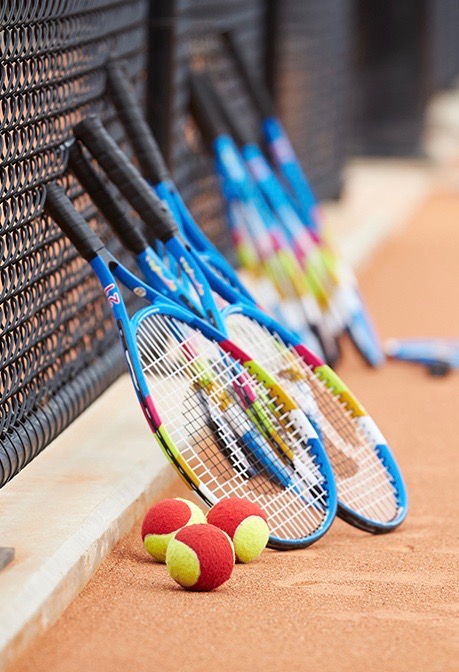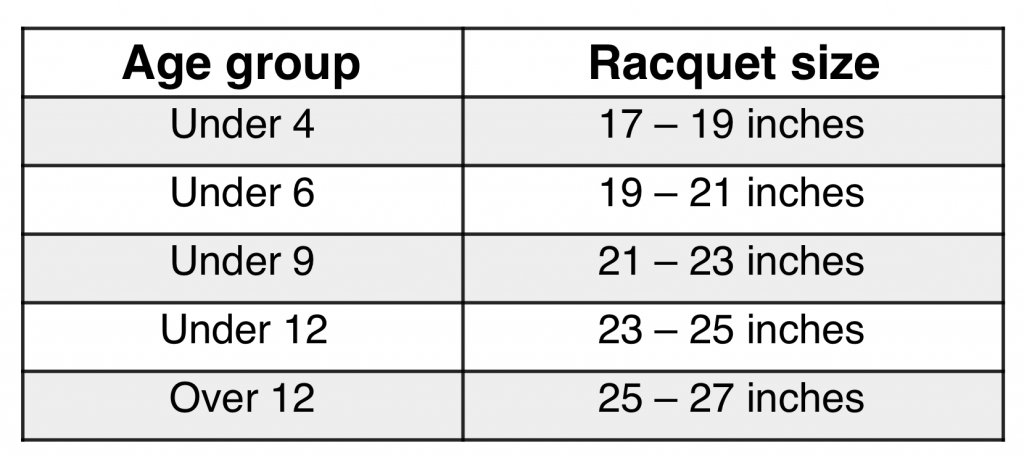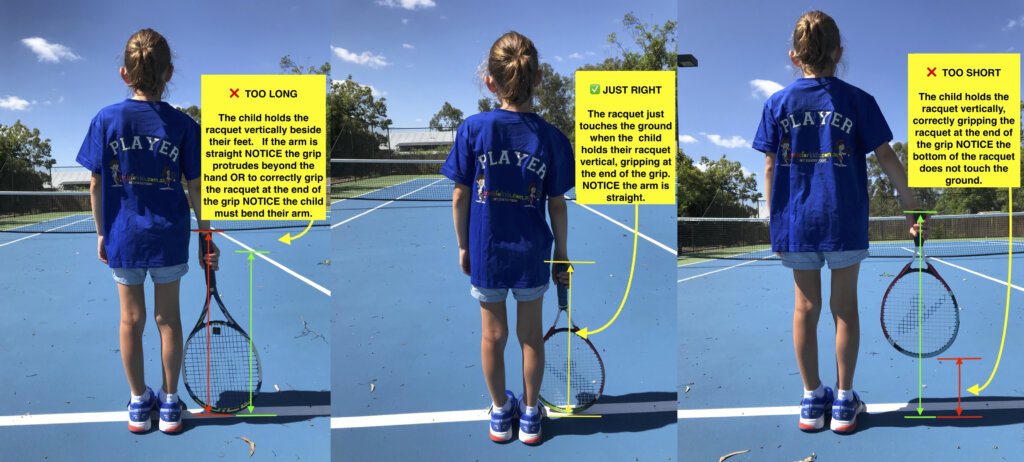Anthony has coached children from the age of 3 years old right through to touring professionals and held a number of different management roles including the Director of Tennis at the Queensland Tennis Centre. Through Tennis For Kids, Anthony and his team of coaches pass on their knowledge, experience and love of tennis to children across Brisbane.
How to choose the right tennis racquet for your child
 I am often asked by parents if their child’s racquet is the correct size. Unfortunately, the answer is not always straightforward and a number of factors need to be considered.
I am often asked by parents if their child’s racquet is the correct size. Unfortunately, the answer is not always straightforward and a number of factors need to be considered.
A larger racquet will give more reach, have a bigger sweet spot and provide additional power (through leverage and weight). These benefits often bring improved consistency and better results. However, children with longer, heavier racquets often shorten their swings, pushing and poking the ball rather than learning how to use their body and swing to generate spin and power. Hence, the introduction of a larger racquet has to be considered in the overall development of a child and not come at the expense of technical progression.
Another factor to consider is the composition of the racquet. An aluminium racquet is stronger and more resilient than a graphite racquet – Able to better cope with being dropped and thrown. However, a graphite racquet will perform better, generating more power and spin.
When deciding the appropriate racquet for a child I will consider the following,
- The height of the child – The taller the child, the longer the racquet and vice versa
- The strength of the child – Children of the same height and weight can vary dramatically in strength. The stronger the child, the more likely I will be to allow a longer and heavier racquet. I have seen 7 year olds who barely have enough wrist strength to lift a 20” racquet and 5 year olds who can swing a 23” racquet like an axe!
- What stage is the player at in their skill development – If a child has really good control over their technique, grips and swing paths, this indicates they will be more likely to cope with a longer and heavier racquet. However, if a child is struggling with their technique and swing shapes, I will be less likely to recommend a larger racquet as it will stifle their technical development even further. The larger racquet can actually stop them from learning how to generate power and the ability to vary their grip. Also something to keep in mind is a child who is developing good swing shapes and regularly generating spin should consider switching to a graphite composite racquet which will aid this process.
- How long the child has been playing tennis – When children commence tennis, a racquet feels heavy and cumbersome. With this in mind it is better to choose a racquet that is slightly “undersize”. The racquet is then lighter and shorter, making it easier to control and swing. A lighter racquet helps the child develop good habits such as gripping the racquet at the base rather than half way up the grip. And most importantly a smaller, lighter racquet makes it easier for the child to hit balls – Providing for more success and fun sooner.
- How does the child treat their racquet – Some children are tough on their racquets – They throw them to the ground when not in use, jam them in their school bag or throw them at the bottom of the bag rack at school. Other children, treat their racquets like a newborn baby – Wrap them in the cover when not in use and always put them down gently. An aluminium racquet is stronger and more resilient – better able to cope with rough treatment. A graphite racquet is a better quality racquet – lighter and capable of generating more power and spin BUT will break if thrown or dropped.
A guide to help choose an appropriately sized racquet for your child is attached below

Another helpful tip is to place the racquet, with head resting on the ground, beside your child and ask them to reach down and put their hand on the end of the racquet. If they have to bend their arm or can’t reach the racquet, it is a good indication it is not the correct size. The attached picture explains how to check the racquet size.

Unfortunately, neither of the above methods takes into account your child’s current skill set and development. The best way to choose a racquet is to ask your child’s coach. If you don’t get a chance to see your child’s coach regularly, just send us an email at [email protected] and we will ask the coach for you. But keep in mind, a growing child who is having coaching and learning new technique will regularly outgrow their racquet.



